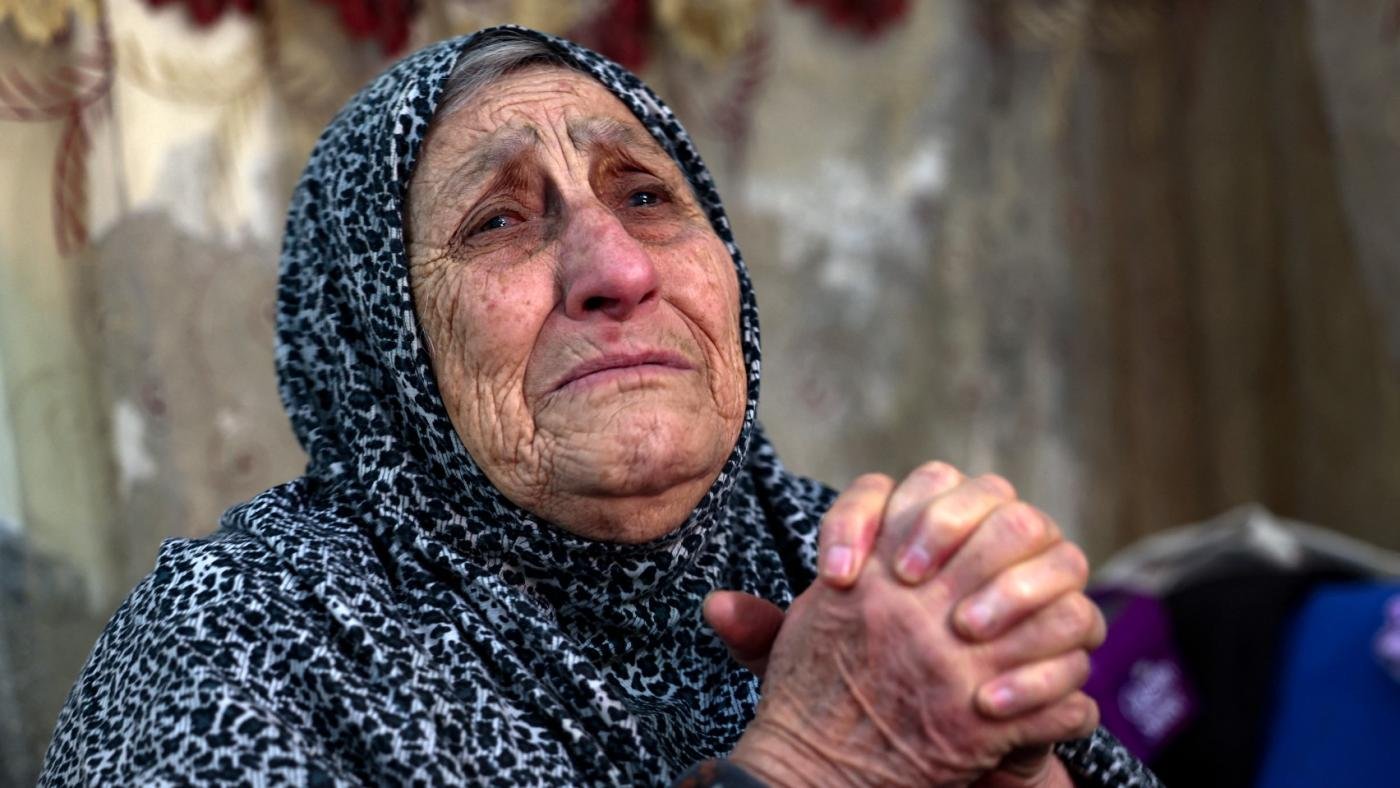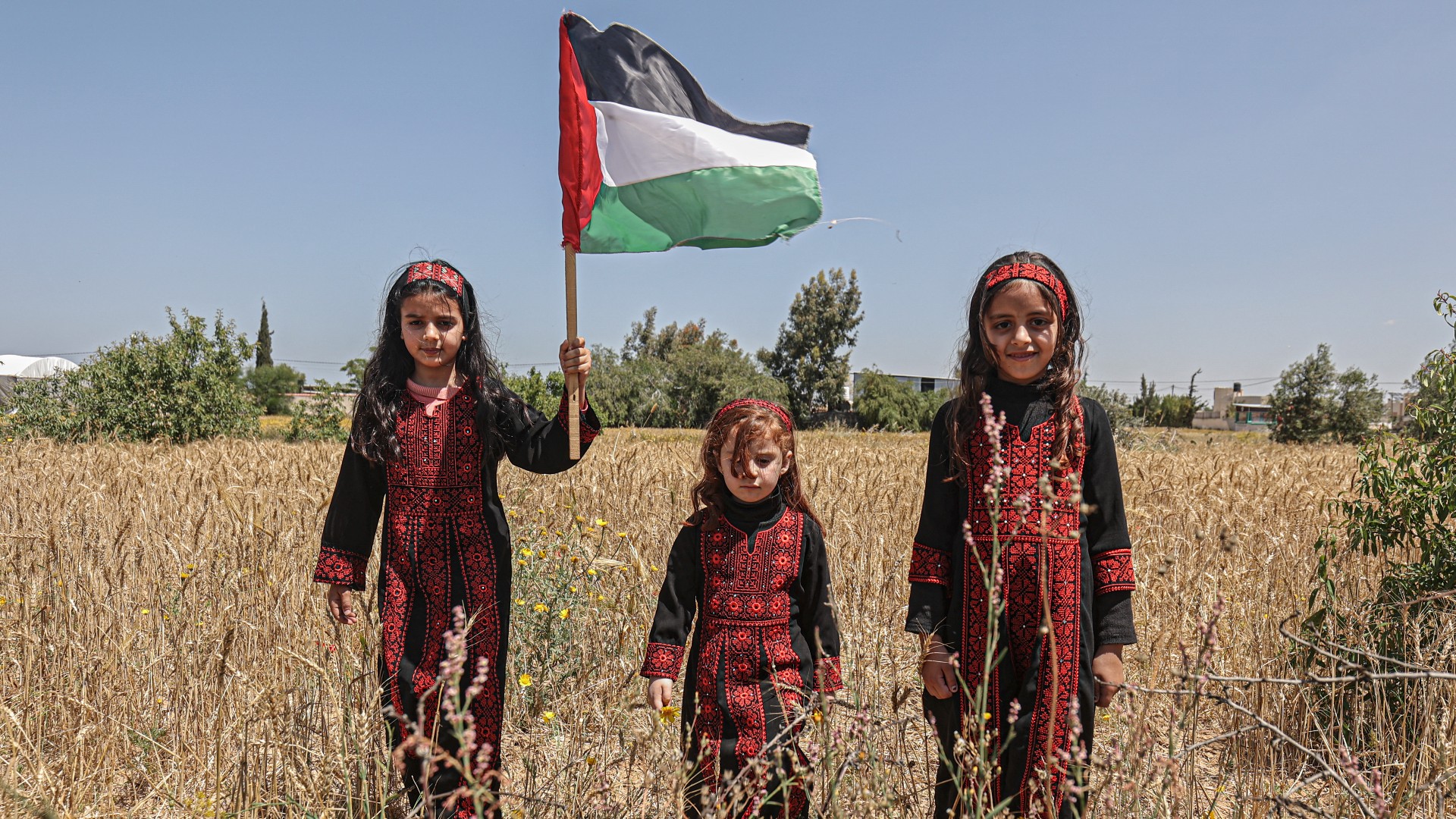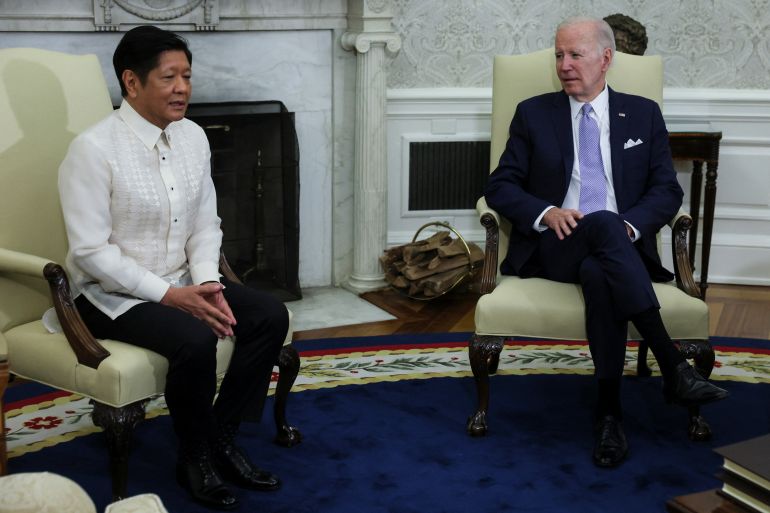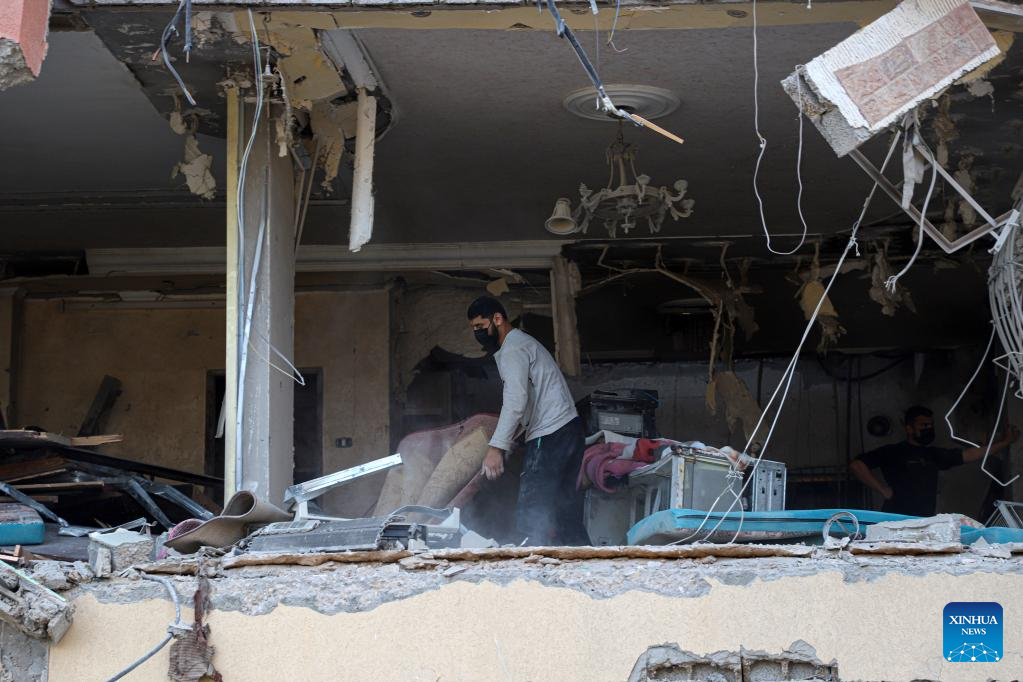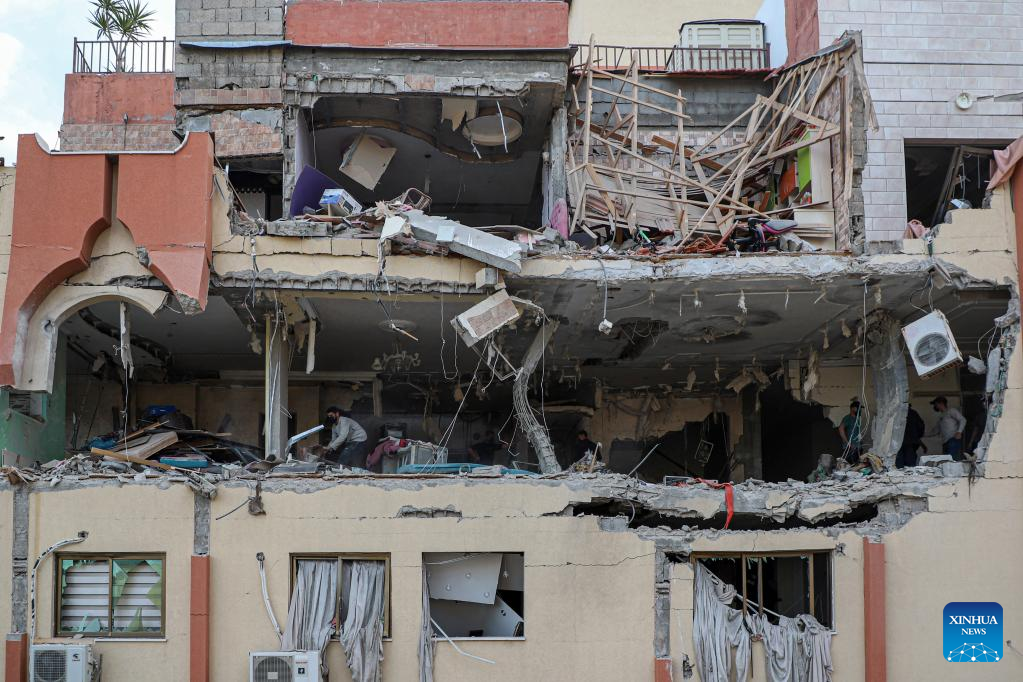
في ذكراها الـ75.. المسنة “مهنا” تعيش فصولًا جديدة من النكبة
غزة/ أدهم الشريف:
لم تسعف الذاكرة انتصار مهنا (95 عامًا) والمعروفة بـ “أم فريج”، وهي تشكو للصحفيين المأساة الجديدة التي لحقت بها وأبنائها وأحفادها نتيجة استهداف منازل المدنيين خلال العدوان العسكري الإسرائيلي على غزة.
لقد دمرت مقاتلات جيش الاحتلال الحربية في غارة جوية، فجر الجمعة الماضية، منزل المسنة وأفقدتها المأوى الوحيد الذي لجأت إليه بغزة، مهجرة من قرية المسمية الكبيرة في الداخل الفلسطيني، تحت وطأة جرائم العصابات “الصهيونية” إبَّان نكبة 1948.
وبفعل جريمة الاحتلال المركبة، تعيش الآن مهنا فصلاً جديدًا من فصول النكبة في ذكراها الـ75، التي تصادف 15 مايو/ أيار من كل عام.
تاريخ لاجئة
أمام منزلها المدمر في منطقة اليرموك وسط مدينة غزة، جلست مهنا حزينة تستقبل المتعاطفين والمتضامنين معها بعد نجاتها من جريمة القصف العنيف، الذي حول خمسة طوابق إلى كومة من الركام.
كانت تفاصيل وجهها والتجاعيد التي تكونت عليه تحكي تاريخ لاجئة فلسطينية ذاقت مرارة العيش بعيدًا عن ديارها المهجرة منه قسرًا إبَّان النكبة، وقد حكت هذه التجاعيد مجددًا تفاصيل معاناتها بعد هدم المنزل الذي يأويها وأبناءها منذ أعوام طويلة، قضوا فيه ذكريات جميلة لن يمحو مرور السنين معالمها من الذاكرة.
ودمرت الطائرات الحربية عددًا من المنازل السكنية خلال عدوان عسكري بدأه جيش الاحتلال فجر الثلاثاء الماضي، واستشهد خلاله 6 قادة في سرايا القدس الجناح العسكري لحركة الجهاد الإسلامي، وعدد من النساء والأطفال، بإجمالي عدد شهداء بلغ 33 شهيدًا خلال 5 أيام من العدوان.
وكانت مهنا -لديها أربعة أبناء وخمسة بنات يبلغ الأكبر بينهم 65 عامًا والأصغر 48 عامًا- من الضحايا المدنيين الذين عادة ما يتعرضون لجرائم بشعة يرتكبها جيش الاحتلال في كل عدوان عسكري.
ولا تملك هذه السيدة الكثير من الكلام، سوى أن قالت مرارًا: “حسبنا الله ونعم الوكيل”، وهي لا زالت تذكر تفاصيل تهجيرها من قرية المسمية الكبيرة التي كان والدها إبراهيم حرب مهنا، أحد أعمدتها ومخاتيرها.
تقول مهنا لـ “فلسطين” عن والدها: إنه “كان قائد وحدة ثورية”.
وفي ذلك الوقت، كانت القوات الثورية الفلسطينية تقاوم البريطانيين بعد احتلالهم فلسطين على أثر انتهاء الحرب العالمية الأولى، وتصدت للعصابات “الصهيونية” التي قتلت آلاف المواطنين الفلسطينيين، ونتج عن مجازرها النكبة.
وتملك هذه اللاجئة رغم تقدمها في العمر ومأساة تهجيرها، حسًا فكاهيًّا نادرًا ما تجده عند سيدة في عمرها، وقد تجمع الصحفيون من حولها وأبناؤها وعدد من أحفادها ينصتون إلى حكاياتها عن هجرة 1948، ونكبتها الجديدة بتدمير مأواها الوحيد.
وقرية المسمية الكبيرة تقع على بعد 41 كيلومترًا شمال شرق قطاع غزة، وتبعد عن مدينة يافا بنحو 39 كيلومترًا، وهي ترتفع 75 مترًا عن سطح البحر، وتبلغ مساحة أراضيها 20687 دونمًا، وفق مراجع تاريخية.
نكبة جديدة
ومنزل عائلة مهنا الذي طالته قنابل الاحتلال كان مكون من 5 طوابق -طابق أرضي وأربعة طوابق متعددة- ويأوي 29 فردًا، كما يفيد محمد مهنا (53 عامًا)، أحد أبناء اللاجئة المسنة.
وقال لـ “فلسطين”: إنه “في الساعات الأولى لفجر الجمعة، وتحديدًا عند الساعة 1:30 ليلاً فوجئت باتصال من رقم خاص”.
“عندما استجبت للاتصال ردّ علي شخص عرف نفسه بأنه من المخابرات الإسرائيلية، لم أعرف في الحقيقة ما الذي يريده في ذلك الوقت، لكنه طلب مني ضرورة إخلاء المنزل والمنازل المجاورة من جميع الجهات استعدادًا لتدميره”.
لم يلبث أن سمع مهنا طلب ضابط مخابرات الاحتلال حتى سارع إلى إخلاء منزل العائلة، وقد لجأ إلى إخبار الجيران للابتعاد عن المنطقة.
وأضاف: إننا لم نتمكن من أن نأخذ احتياجاتنا الضرورية بعد التهديد بالقصف، غادرنا المنزل مباشرة وتركنا كل شيء خلفنا، لقد هدموا ذكرياتنا ودفنت القنابل براءة أطفالنا وأحلامهم”.
وما إن أعلن اتفاق وقف إطلاق النار، مساء السبت الماضي، كشفت الساعات التالية عن حجم الجريمة التي تعرضت لها منازل المدنيين بفعل استهدافها بقنابل المقاتلات الحربية.
وتابع مهنا: صدمنا عندما رأينا منزلنا وقد تسببت القنابل الإسرائيلية بابتلاع الأرض نصف بنايتنا السكنية.
وإحدى الشقق السكنية المدمرة ويملكها حازم مهنا، كان يضع فيها قطع “أنتيكة” وصفها بأنها “ثمينة”، تزيد تكلفتها عن 30 ألف دولار، وقد راحت كلها تحت الركام.
وقد أصبحت جريمة الاحتلال بهدم منزل العائلة في نظر أبناء وبنات وأحفاد المسنة مهنا، فصلاً جديدًا من النكبة يصنعه جيش الاحتلال والذي تشكل من عصابات “الهاغناه” و”الأرغون” و”اشترين” وغيرها ممن نفذت جرائم يندى لها الجبين لإقامة كيان (إسرائيل).
لكن اللاجئة مهنا على الرغم من النكبة المستمرة التي تعيشها وأبناءها وأحفادها، بدت أنها أكثر تمسكًا بالعودة إلى ديارها المهجرة منها أكثر من أي وقت مضى، وهي تواقة لهذه اللحظة على الرغم من تقدمها في السن.
أما ابنها رأفت تساءل: “ما الذنب الذي ارتكبناه حتى يهدم منزلنا؟ حقًا إننا نعيش نكبة جديدة”.
وأضاف لـ “فلسطين”: إن أطفالنا ونسائنا وكبارنا لا يستحقون ما يفعله جيش الاحتلال من جرائم.
(المصدر: صحيفة فلسطين)

